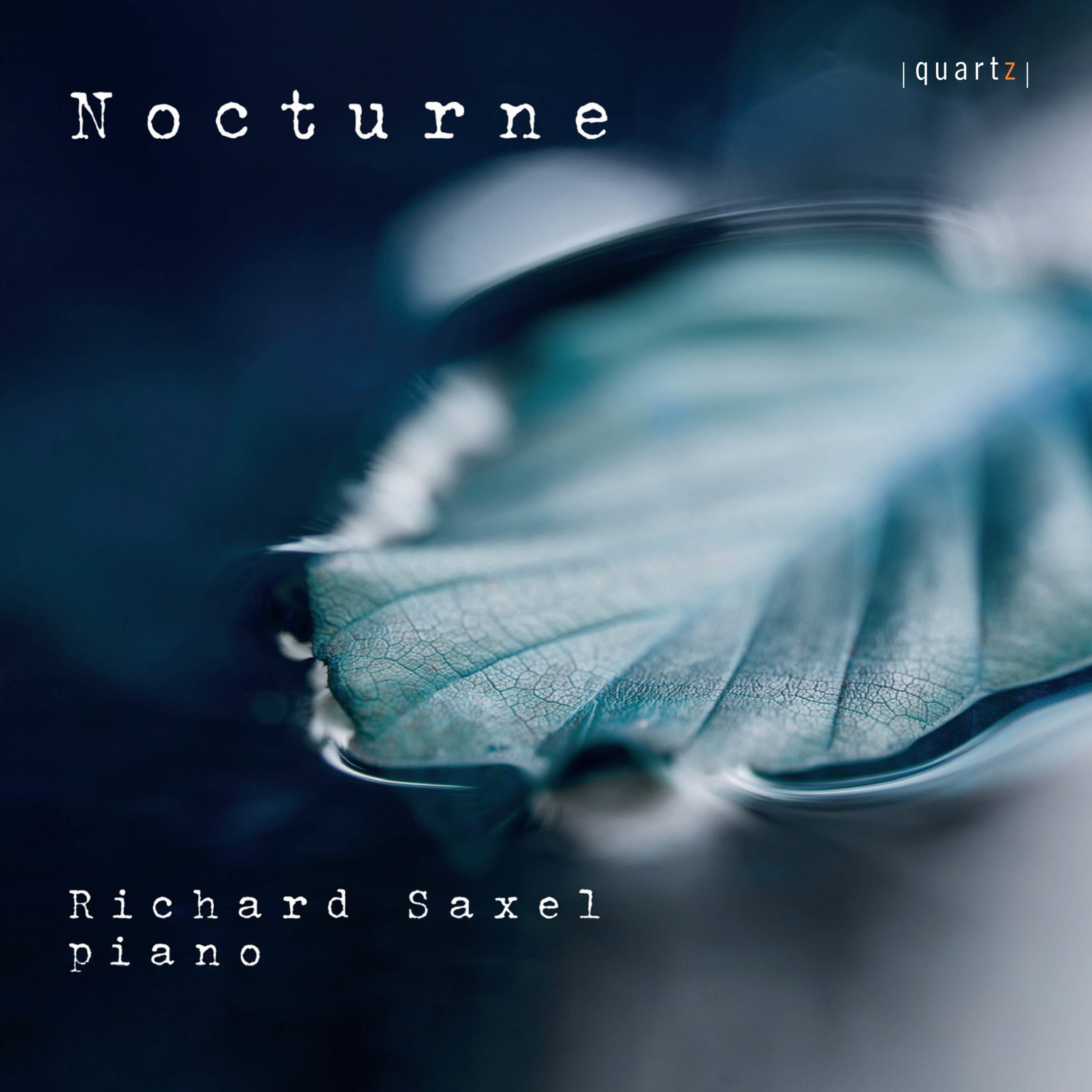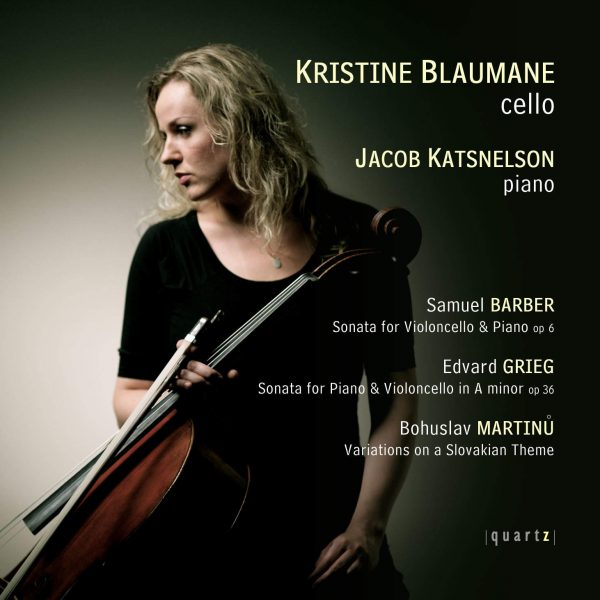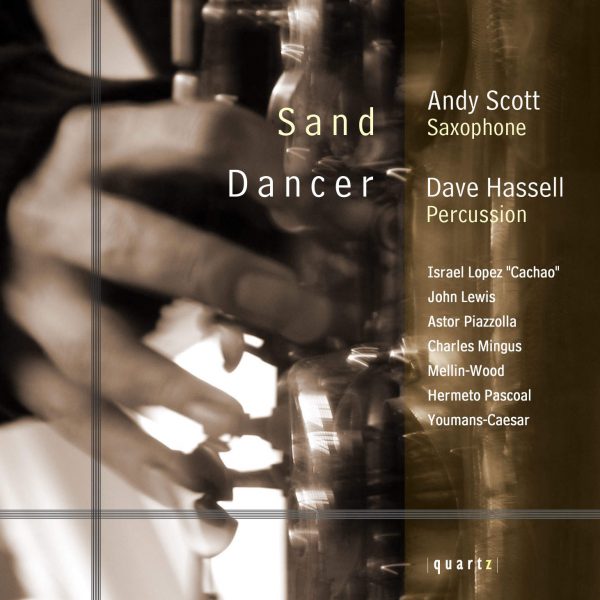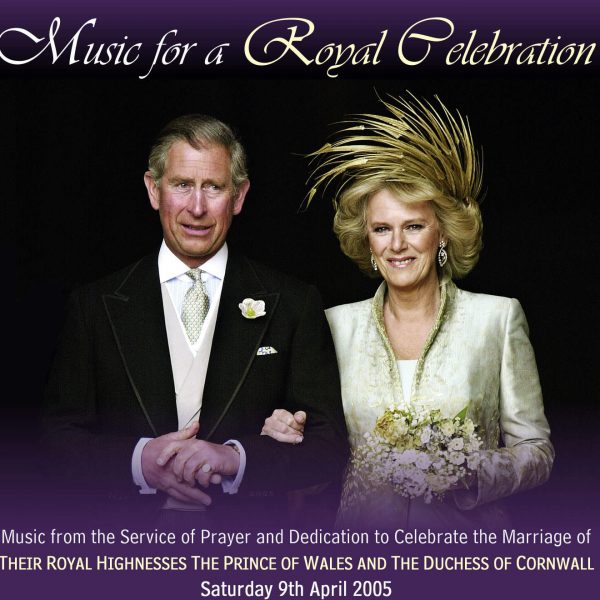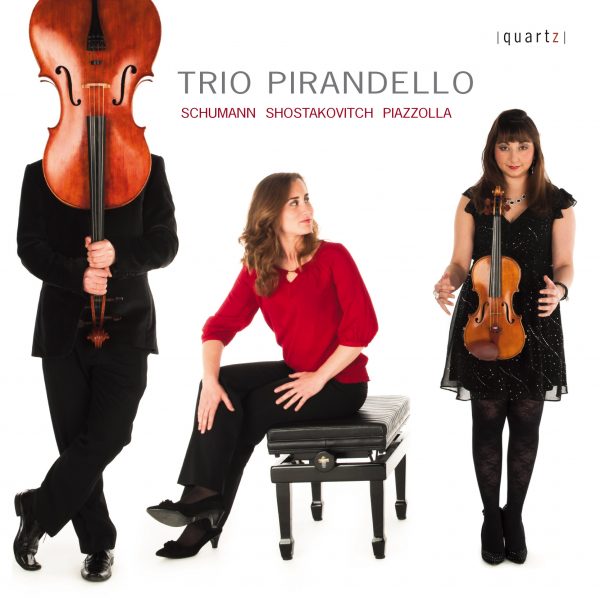Nocturne
£7.99 – £14.99
Richard Saxel has always been interested in the links between art and music, and conceived this recording along the lines of a Cubist painting, considering nocturnes and night music from multiple angles, but having the intention to create a complete picture through the album as a whole. There are contrasting areas of light and darkness, achieved by grouping pieces together according to different themes or criteria; sometimes by the composers’ nationality, sometimes by the key or intensity of the music, and still further groupings with particular themes. Thus there are pieces where suggestions of the nightmarish supernatural are never far away, a group in which depictions of the natural world are explicit, and by contrast another suggesting the edginess of the urban night.
Avoiding a chronological survey, nearly two hundred years’ worth of music is represented from the earliest example by John Field to works composed in this millennium. The works by Lowell Liebermann, Antonio Bibalo, Dave Brubeck and Leonid Desyatnikov serve as reminders that the nocturne has developed considerably from the earliest model of a pretty Romantic piece with a repeated left hand figure supporting a decorated right hand melody, and yet has retained the intense distillation of emotion.
About This Recording
In a small gallery on the fifth floor of the Museum of Modern Art in New York hangs one of the most famous paintings in Western culture; Vincent Van Gogh’s ‘The Starry Night’ (1889). Tourists flock to have their photograph taken next to the painting, marching past Cubist masterpieces by Picasso, Braque and others without a second glance. Perhaps the Cubists do not have the same immediate allure, perhaps they are harder to understand, or perhaps Van Gogh’s masterpiece is simply more famous, but these small galleries house some of the most iconic images in Western culture.
I have always been interested in the links between art and music, and conceived this recording along the lines of a Cubist painting, considering nocturnes and night music from multiple angles, but having the intention to create a complete picture through the album as a whole. There are contrasting areas of light and darkness, achieved by grouping pieces together according to different themes or criteria; sometimes by the composers’ nationality, sometimes by the key or intensity of the music, and still further groupings with particular themes. Thus there are pieces where suggestions of the nightmarish supernatural are never far away, a group in which depictions of the natural world are explicit, and by contrast another suggesting the edginess of the urban night.
Avoiding a chronological survey, nearly two hundred years’ worth of music is represented from the earliest example by John Field to works composed in this millennium. The works by Lowell Liebermann, Antonio Bibalo, Dave Brubeck and Leonid Desyatnikov serve as reminders that the nocturne has developed considerably from the earliest model of a pretty Romantic piece with a repeated left hand figure supporting a decorated right hand melody, and yet has retained the intense distillation of emotion.
Works of art served to further illuminate my thoughts as the album progressed, and the links between composers and artists became more apparent. Ivan Shishkin’s ‘In the Wild North’, painted in the same year (1891) as Grieg’s popular piece, seemed to illustrate the Norwegian sound world perfectly. Grieg and Edvard Munch were friends, and the artist’s series of paintings entitled ‘Separation’ (1896) seemed an apt companion to Glinka’s piece of the same title. James Abbott McNeill Whistler’s numerous ‘Nocturnes’ were constant points of reference, whilst John Atkinson Grimshaw’s ‘Under the Harvest Moon’ (1872) seemed to suggest something similar to Alec Rowley’s pastoral idyll, and Edward Hopper’s ‘Nighthawks’ (1942) brought some illumination to Dave Brubeck’s ‘Audrey’, even though the piece was originally homage to the film star Audrey Hepburn. Leonid Desyatnikov’s intoxicating music was conceived with the moving image in mind, and Fabian Perez’s sensual paintings seemed the perfect embodiment of Piazzolla’s music, but perhaps the most obvious link belongs to that between Selim Palmgren’s nocturne ‘The Stars are Twinkling’, and the famous painting on the fifth floor of the Museum of Modern Art in New York.
Alec Rowley (1892–1958) published his Five Nocturnes in 1947. Like much of his music, they were aimed at the amateur musician, and the Nocturne No.5 in F major is characterised by a typically romantic, pastoral style. Ivor Gurney’s (1890- 1937) charming Nocturne in A flat was written in 1909, when he was a pupil of Sir Herbert Brewer at Gloucester Cathedral, and two years before he became Stanford’s pupil at the Royal College of Music. Owing a little stylistically to Schumann, the repeated melody is further evidence of the gift Gurney was to develop as a superb composer of songs. My friend Anthony Herschel Hill (1939- 2016) was an English composer, pianist, organist and teacher, and this is the first recording of his beautiful piece Das Lebewohl. Composed in 1980 and dedicated to Barbara Wilcynska, the piece is a desperately sad farewell, with an uplifting sense of hope in the final bar. The contribution of John Field (1782-1837) to the genre is well documented, and he is widely regarded as the first composer to title a romantic character piece (typically with a repeated arpeggiated left hand figure supporting a decorated right hand melody) as a Nocturne. He wrote sixteen between 1812 and 1836, with the E minor Nocturne No.9 dating from 1821. There are echoes here perhaps of another famous nocturnal piece – the first movement of Beethoven’s ‘Moonlight’ Sonata.
Lowell Liebermann’s (b.1961) eleven Nocturnes are an extraordinary contribution to the genre, and run the full gamut of the emotional spectrum. Written in 1992, No.4 begins with a spectral beauty, before developing inexorably into a massive and unstoppable force. Whilst the threat eventually recedes, the darkness is palpable throughout. Frédéric Chopin’s (1810-1849) output of twenty-one nocturnes is the sine qua non of the genre; this hauntingly beautiful example dating from 1837 was not published during his lifetime, and then against his express wishes. It inhabits a world of darkness and shadows, and despite brief moments of hope, never quite manages to shift the sense of gloom and sadness. Francis Poulenc (1899-1963) wrote eight nocturnes over a decade from 1929, and they are night-scenes often suggesting public or private events. Bal Fantôme (No.4) dates from 1934, and is prefaced with a quote from Le Visionnaire by Julien Green, which describes an old man lying on his death bed in a grand house, and listening to the strains of a ball coming from downstairs. The lingering memories of the waltz and schottisches remind him of his youth. Poulenc and Louis Durey (1888-1979) were close friends, members of the group of composers known as Les Six in Paris in the 1920s, and counted Picasso and other Cubist artists as friends and collaborators. Durey was probably the most enigmatic and least well known of the group; this unsettled piece (written in 1932) never really finds any resolution until its final bar, yet its beauty is undeniable.
Selim Palmgren (1878-1951) was a Finnish pianist, composer and conductor, and his music has instant appeal, owing something to Chopin, Grieg and even Debussy but retaining an individual style closely allied to the Nordic folk-song tradition. The Stars are Twinkling is the first movement of his Kolmikohtauksinen nocturne (Nocturne in Three Scenes), Op.72a, and dates from 1921, the same year he took up the post of professor of composition at the Eastman School of Music in New York. Béla Bartók’s (1881-1945) The Night’s Music is the fourth movement of his ‘Out of Doors’ suite of 1926. It contains three different types of musical material; imitation of the sounds of the natural world at night (birds, cicadas, the Hungarian unka frog), a chorale, and an imitation of a peasant flute. Bartók is extremely specific in his dynamic markings, and manages to combine all three strands of material in a magical work. Edvard Grieg (1843-1907) wrote sixty-six Lyric Pieces between 1867 and 1901, and they are an extraordinary collection of Nordic Romantic piano music. Notturno, Op.54, No.4 (1891) begins with the ‘Grieg signature motif’ (the same notes as the famous opening of his Piano Concerto Op.16), and shows some similarity to Debussy’s famous Clair de Lune – perhaps unsurprising given the two composers’ mutual admiration, and more than an acknowledgement of the chromaticism of Richard Wagner, another composer Grieg admired.
Mikhail Glinka (1804-1857) is regarded as the father of Russian Romanticism, and even had three piano lessons from John Field in the winter of 1817, warmly acknowledging his influence. His nocturne La Séparation (1839) was dedicated to his sister Elizabeth, who was away in St. Petersburg. Anton Scriabin (1872-1915) composed his two Nocturnes, Op.5 in 1890, whilst studying at the Moscow Conservatory. He was in an extraordinary class with Sergei Rachmaninov, Josef Hofmann and Josef Lhévinne, and although his compositional style was to develop radically, these early works owe much to the influence of Chopin. There is a rhythmic and melodic freedom to them, alongside a daring sense of harmony that could just as easily belong to a number of romantic miniature genres; any suggestion of night-music is subtle and implicit.
Antonio Bibalo (1922-2008) was an Italian-Norwegian composer and pianist, and his Tango Nocturne perfectly captures the shadowy world around this most sensual of dance forms, using sparse textures and vivid splinters of rhythm. Only towards the end do the fragments combine to become vaguely recognisable as a tango rhythm, but the sultry danger and evocative sense of the night are palpable throughout, even if they are not as explicit as in Astor Piazzolla’s (1921- 1992) Buenos Aires Hora Cero. Composed in 1963 whilst he was working in the nightclubs and cabarets of Buenos Aires, Piazzolla describes in an interview how at midnight the musicians would take a break and walk around the desolate city, hearing only sirens, occasional footsteps and the noises of the city; the work became one of his breakthrough pieces in the nuevo tango style.
Dave Brubeck’s (1920-2012) nocturnes are, in their own way, as poetic and romantic as those of any of the composers featured on this recording, and Audrey manages to combine a bittersweet nostalgia with just a touch of swing. Recorded originally in 1954 on his album ‘Time’, it is a quiet minor blues, and wistful homage to Audrey Hepburn, whom Paul Desmond (the saxophonist in Brubeck’s band) was smitten with. It was to become one of his most popular tunes. Leonid Desyatnikov (B.1955) composed his nocturne Giselle Obsession for the film ‘Giselle’s Mania’ (1995, directed by Alexey Uchitel), which is a detective drama based on the true story of the world famous Russian ballerina, Olga Spesivtseva – known as ‘Red Giselle’ – who fled to the West from the USSR, and was pursued by the KGB all over the world. It’s intoxicating harmonic language provides a suitably unsettling end to this disc.
—Richard Saxel, August 2017
The nocturne in western culture is a relatively modern concept. It is first suggested in literature by John Donne’s “A Nocturnal Upon St Lucy’s Day” (1633), a poem set on the shortest day of the year – Donne, with his sharp eye for irony, would doubtless have enjoyed the fact that the shortest day was named after a saint whose name is derived from the Latin word “lux”, meaning light. For Donne, night is a time of emptiness, when “life is shrunk, dead and interr’d” and he uses it, with characteristic wit, as a comparative metaphor for his own love-lorn, emotional state. This first nocturne in English was not, however, characteristic of what was to succeed it; for other Metaphysical poets, their exploration of the nocturne hearkened back to the word’s ecclesiastical etymology; the “nocturn” was, in the Catholic Church, one of the offices of matins, read during the night. Henry Vaughan, for instance, writing in 1650, considered the night a time for spiritual enlightment, born of meditation. With a characteristic sense of his own exclusivity, he dismisses those who “Say it is late and dusky because they see not all clear” and allies himself with the Jewish leader Nicodemus who “saw such light as made him know his God by night”. For the poets of the 17th century, night was, above all, a time for spiritual reflection. There was, however, acknowledgement that such devoutness was not universal, anticipating the more edgy development of the nocturne in the years to come; Milton, for instance, in Book 1 of “Paradise Lost”, describes how;
“when night
Darkens the streets, then wander forth the sons
Of Belial, flown with insolence and wine”.
The tension between night as a time of danger and potential salvations from such threat was drawn into even sharper focus by William Blake, in “Night”, one of his “Songs of Innocence and Experience”. The opening of the poem depicts the sort of pastoral idyll that would serve as an accompaniment for the music of Field, Gurney and Rowley; Blake presents us with an England of “green fields and happy groves” populated with birds and lambs. As the poem develops, however, the weary but contented silence of Blake’s nightscape becomes filled with nightmarish, discordant sounds of menace and danger, as “wolves and tigers howl for prey”. The only salvation for their passive, helpless victims is the didactically religious figure of the lion, who promises to “guard o’er the fold”; again, the only respite from the terrors of the night seems to lie in a religious intervention.
The more explicit association of the night with the allure and beauty of the natural world, which is explored in this recording in the works of Palmgren, Bartok and Grieg, is most demonstrably seen in the nocturnes of William Wordsworth, which associates the nocturnal with the sublime. Perhaps the finest example of this is “1798: A Night Piece” in which a “pensive traveller”, journeying through the countryside on a cloudy, overcast night, momentarily glimpses the moon and the stars, “immeasurably distant” and of “unfathomable depth”, leaving “the mind not undisturbed by the delight it feels”. The intensity of the response is more humanist and subjective than anything found in Blake and signals a shift towards greater secularity in the depiction of the nighttime world.
Chopin, Poulenc and Liebermann’s more disturbing, nightmarish visions invite parallels not so much with Romanticism as with its close, disturbed relation, the Gothic. For writers such as Edgar Allan Poe, the night prompted not wonder but fear; not awe but misery. His most famous poem, “The Raven” begins “upon a midnight dreary”. A young man, mourning his lost love, Lenore, is confronted by a talking raven, whose repeated answer of “Nevermore” induces him to ask increasingly pointed and self-serving questions to the sinister and mysterious bird. Metrically, Poe’s employment of a trochaic octometer (eight feet of poetry per line, in which a stressed syllable is followed by an unstressed one) creates a hauntingly inescapable rhythm, compounding our sense of the finality of the narrator’s loss. We are now moving sharply and inexorably away from salvation.
The nocturne has always, perhaps inevitably, been an exploration of sleeplessness and the anxieties that precipitate that state. For the metaphysical poets, these anxieties could be allayed by religious devotion; for the Romantics, by an appreciation of the beauties of the natural world. During the twentieth century and into the twenty first, however, these remedies seldom seemed to satisfy. Instead, increasingly, the nocturne has become either an exploration of alienation, disenchantment and psychological frailty or a depiction of an emptily hedonistic, urbanized landscape. Indeed, the two are not necessarily distinct; Charles Bukowski conjoins them with a darkly vivid clarity in “Big Night on the Town”, which begins;
“drunk on the dark streets of some city,
it’s night, you’re lost, where’s your room?”
The use of the second person simultaneously personalizes and universalizes the misery, as Bukowski remorselessly directs us through a night of alcohol-fuelled misery, prostitution and loneliness, culminating in a hotel room where cockroaches dance and “where love died laughing”. Similarly, the Irish poet, Derek Mahon, began his remarkable volume, “The Yellow Book” with two urban nocturnes, “Night Thoughts” and “Axel’s Castle”. As darkness falls, he too
emphasises the isolation of the city – in this case, Dublin – comparing it disconsolately with the familial warmth of the suburbs: “It’s cold up here in the city of litter and drums while fires glow in the hearth of suburban homes.” Like Bukowski, he uses images of infestation to intensify his sense of nocturnal despair:
“…I’m going crazy up here on my own.
I sit like Domitian in a hecatomb of dead flies.”
There is little succour here. The city in modern poetry has all the darkness of Piazzola’s Buenos Aires but none of the sultriness or the allure. For the last hundred years, the nocturne in literature has increasingly depicted a morally bankrupt world of squalor and widespread disaffection, offering little by way of redemption; in its musical equivalent, there is, at least, the faintest glimmer of a dawn.
—G.J.N Neill, August 2017
Track Listing
- JOHN FIELD Nocturne No.9 in E minor, H46 (3’31)
- ALEC ROWLEY Nocturne No.5 in F (5’48)
- IVOR GURNEY Nocturne in A flat (3’01)
- ANTHONY HERSCHEL HILL Das Lebewohl (3’16)
- LOWELL LIEBERMANN Nocturne No.4 (6’22)
- FREDERICK CHOPIN Nocturne No.21 in C minor, Op.post (3’43)
- FRANCIS POULENC Nocturne No.4 in C minor (2’20)
- LOUIS DUREY Nocturne Op.40 (5’32)
- BELA BARTOK IV: Sounds of the Night, from Out of Doors (2’46)
- SELIM PALMGREN Nocturne Op.72, No.1 ‘The Stars are Twinkling' (5’43)
- EDVARD GRIEG Notturno Op.54, No.4 (3’47)
- MIKHAIL GLINKA Nocturne in F minor ‘La Separation’ (4’06)
- ANTON SCRIABIN Nocturne Op.5 No.1 in F sharp minor (4’15)
- ASTOR PIAZZOLLA Buenos Aires Hora Cero (7’33)
- ANTONIO BIBALO Tango Nocturne (3’32)
- DAVE BRUBECK Nocturnes ‘Audrey’ (2’19)
- LEONID DESYATNIKOV Nocturne from the film ‘Giselle Obsession’ (4’23)
